Eduard Munninger — Roses in AustriaBurg Krämpelstein, A.M.O.R.C., Antiqua Arcanae Ordinis Rosae Rubeae et Aureae Cruci, A.A.O.R.R.A.C., Schloss Vichtenstein, Spencer Lewis, Reuben Swinburn Clymer, Max Heindel, Arnoldo Krumm-Heller, Martin Erler, Hans Vogt, Albert Babor, Karl Plank Peter-Robert Koenig The following italicised extracts numbered from 1 to 10 are taken from a detailed letter[1] by Thomas Michael Markus Munninger, the son of Eduard Munninger.[2] These statements are then put into a probable time-frame by adding further details. Thomas Munninger: 2. In the year 1938-9 the ownership of this castle was transferred (bypassing the option to purchase clause) to the new owner of Schloss Vichtenstein, a certain Herr [Dip. Eng. Klaus] SCHULTZ-WULKOW, of a (noble?) family originating from PODELZIG or PEN.[4] As a result, my FATHER remained as tenant/lessee of this property. 3. As a result of his enterprise, the property was developed as a hotel and artist’s residence. 4. This same Castle Krämpelstein, which was already an almost DERELICT RUIN in the year 1937, was REBUILT and MADE FIT FOR HABITATION from 1938-1942, with the help (among others) of his friend Dr. JOHANNES VOGT (one of the inventors of the sound film). 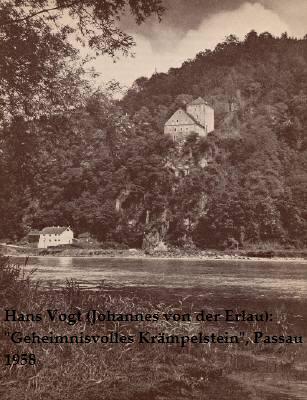
At this time Munninger’s Rosicrucian organisation called itself Antiquus Arcanus Ordo Rosae Rubeae Aureae Crucis. That title had already appeared in 1921, in association with Arnoldo Krumm-Heller and Theodor Reuss; it had also been given as the full name of the A.M.O.R.C. by Spencer Lewis: “The Rosenkreutz Order [Pansophia] in Germany was (and is) a branch of the A.A.O.R.R.A.C.”[5] “The only North American section of the A...A...O...R...R...A...C... [...] is that known in the Western world as A...M...O...R...C...”[6] The sternest critic of A.M.O.R.C. was Reuben Swinburne Clymer of Beverly Hall in Quakertown, Philadelphia, who in several weighty tomes had assessed Lewis’s claims as either barefaced lies or fantasies; he thought of such assertions that Lewis had “another vision—dreamed another dream—and it became the ‘Antiqua Arcanae Ordinis Rosae Rubeae et Aureae Cruci’ of France.”[7] Munninger seems to have paid little heed to the animosities between the various Rosicrucian orders of his era. With his Fraternitatis Rosæ Crucis, Clymer sought to recruit allies for his anti-A.M.O.R.C. World Circle of Arcane Orders. Nonetheless, Munninger signed up to Clymer’s “Second Fama Fraternitas. For a New Age Beginning in The Twentieth Century Issued by the Fraternitas Rosae Crucis” under the seal of the Antiquus arcanus Ordo Rosæ rubeæ aureæ Crucis, shortened to A.A.O.R.R.A.C., Burgkapitel Krämpelstein Austriæ as its Hierarch. His name in this Order was Medardus.[8] The A.A.O.R.R.A.C. was divided into further grades; their respective Order names and functions being arranged as follows:
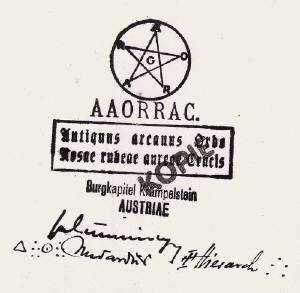
By 1943 a number of bombed-out residents from Vienna had been quartered at the castle by the authorities. After 1945During the period of de-Nazification after World War Two witnesses came forward to attest to Munninger’s strong opposition to the Nazi regime. The parish priest of Reichraming remembered that Munninger “expressed his rejection of National Socialism in the strongest and starkest terms, which made me fear for his safety.”[9] A former agent of the SD (the ‘Sicherheitsdienst’ or Nazi security police) Franz [surname illegible] likewise furnished a statement on April 24th 1947: “As former SD agent for Schärding district in Upper Austria I can so far as I know and recall particular matters, state that in the summer of 1943 investigations were being conducted against Herr Eduard Munninger, domiciled at Schloss Krämpelstein, Esternberg, Upper Austria, apparently on the basis of information received from Bavaria—either via the Gestapo regional headquarters in Passau or the SD’s Passau branch office—and that if confirmatory evidence was obtained, Munninger was to be arrested along with, as is now clear, a considerable number of prominent personalities in consequence. The suspicion was that Schloss Krämpelstein was the location of a Freemasonic lodge, that assemblies of Brothers took place there and that Munninger was active in a leading role in this lodge. Because of my coincidental presence at the Passau SD branch office I was told about this and made responsible for the case, as Schloss Krämpelstein was itself situated in the Schärding war zone. I had known Munninger personally for some years, having been associated with him through my activities as a bookseller in Linz during the 1930s. So it fell to me to intervene in the investigation, not only by paying a joint visit to Munninger at Schloss Krämpelstein with the leader of the Passau SD, to convince him of Munninger’s harmlessness, but also to conduct further enquiries in Schärding and thus prevent the arrest of Herr Munninger and the other lodge-members who were also known to me. Munninger had a reputation as an opponent of the Nazi party. I am ready to repeat these statements in an official capacity.” Max Heindel, Reuben Swinburne Clymer, Arnoldo Krumm-Heller and Martin Erler until 1949Thomas Munninger: Nonetheless, after the war Munninger wanted to resume Rosicrucian work in Europe, gathering together scattered members of all jurisdictions. Besides A.M.O.R.C., Max Heindel’s Rosicrucian Fellowship and Clymer’s Fraternitas Rosæ Crucis, there were also Krumm-Heller’s F.R.A. groups, though these were mainly active in Latin America. In 1947 Munninger exchanged letters with Clymer, and expressed a hope that his own work Brevier der Einsamkeit (‘Guide to Solitude’) would appear in America and that Clymer’s books could be published in Austria.[11] Since Clymer was opposed to Lewis’s A.M.O.R.C., he had already taken Arnoldo Krumm-Heller on board, and Munninger asked for and got Krumm-Heller’s address from Clymer in 1948. He duly wrote to him on 7th September 1948. Munninger’s letter-heading bore the legend “Ordinis Rosæ Crucis Austriæ, Burgkapitel Krämpelstein”, while the letter itself was addressed to the “Legitim[ate] Hierarch of the Rose Cross Fraternity in Germany Dr. Krumm-Heller” at his residence in Lahn near Marburg: “Since the year 1937 I have gathered real throngs of Brothers here and on those occasions we used a single, agreed observance for our assemblies. During the years this house was the meeting-place of the Brethren, there was always an opportunity to linger longer for instruction and contemplation within the Order, until the place was confiscated (1944) […] After the war unhappily, not many Brothers returned and my time was mainly devoted to reorganisation; beyond my activities as a private tutor and author, I was mostly occupied with elaborating and compiling works on the Secret Science […] Because I have had a close link for years with the ROSICRUCIAN fellowship [Max Heindel’s Rosicrucians] and as a result built spiritual bridges to AMORC and the Fraternitas Rosæ Crucis [Reuben Swinburne Clymer’s Rosicrucians], I came to the notice of numerous groups of Brethren from Sweden, Switzerland, Holland and Denmark, so an intensive organisational collaboration with these aforementioned societies ensued. My own Order was by now wholly independent and self-sufficient. Sadly, thanks to the deeply troubled times, we have all become wholly desperate and impoverished. But the social problems and spiritual depression of Europe means we need co-operation and a meeting of all positive minds, now more than ever! […] Current affairs and politics are far from our thoughts. This latter is surely the Hydra that ever and again sings its demonic song of ‘Heaven and—the gallows’ in different guises, vestments and names.” Krumm-Heller was so impressed by this letter that his very first reply a fortnight later named Munninger as his successor. In the subsequent exchange of letters the A.M.O.R.C. was mentioned no further. Krumm-Heller on 18.9.1948: |
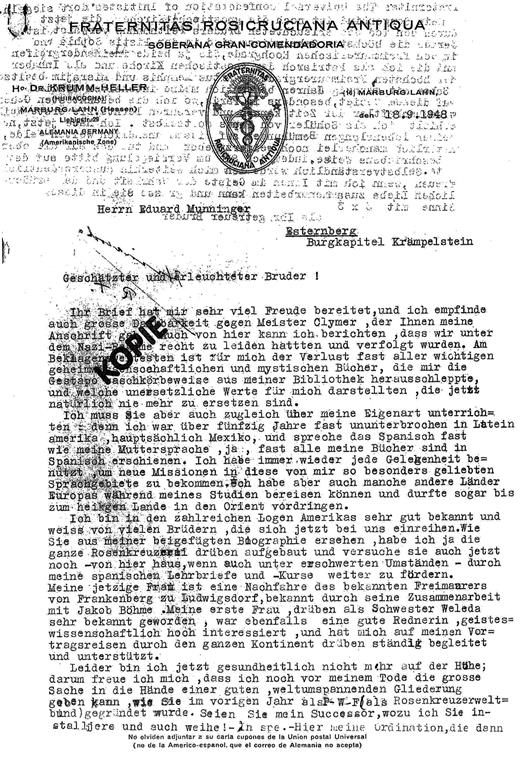
|
“Regrettably I am not now in
tip-top shape health-wise; but it pleases me to think that after my death I can
leave the main issue in the hands of a decent worldwide membership, as already
established by yourself in the P-W-F (or World Union of Rosicrucians).[12] You shall be my Successor, into
which office I duly install and likewise consecrate you—specifically herewith
my ordination becomes legally valid, when you, dear ill[uminated] Brother,
have signed the ‘Universal Confederation of Initiates’ Warrant of the
Fraternitas. [13]
“My present problem-child is the Gnostic Church, now orphaned due to the death of the enlightened Brother Peithmann.[14] “Just the highest secrets within the Pistis Sophia and the Higher Degrees of Freemasonry are interlinked, which I possess as Patriarch of the Gnostic Church and as possessor of the highest Masonic grades of the Rituals Memphis and Misrajim [sic].”[15] In view of post-war conditions, it is perhaps not so surprising that Krumm-Heller installed Munninger as his heir in his first letter. It bears a distinct resemblance, for example, to what befell Hermann Joseph Metzger of the Swiss O.T.O., when Eugen Grosche’s first reply to him in 1950 granted him all print and authorial rights for the Fraternitas Saturni’s publications. During World War Two many members had gone missing and the internecine animosities of the various orders necessarily had to take a back seat. Munninger lived on a castle,[16] Metzger in neutral Switzerland; both must have looked like attractive prospects to ailing old secret-society campaigners. Any potential hostility between Munninger and Metzger did not surface for the time being, due to gaps in their knowledge of which order-remnants and members had survived, and a simple lack of communication. Exactly when they first became acquainted is not known. In contrast to other esoteric protagonists, Munninger never seems to have been particularly interested in putting himself at the head of his own order; his thoughts tended more towards establishing a broad platform for a variety of other Rosicrucian organisations. At this same period Munninger made contact with Albert Wolff, an earlier protégé of Krumm-Heller’s. In his letters to Krumm-Heller, Munninger spoke of a “UNION” in which all “societies and groups dedicated to Spiritual Science” would be amalgamated,[17] an idea he would not abandon for the rest of his life. About the same time Metzger came up with a similar idea; not intended for recruiting Rosicrucian groups, but aimed rather at uniting Knights Templar under his leadership. However, Munninger already had the advantage of being ensconced atop a castle by the Danube, a much more suitable location for knightly armour to disport itself, rather than submitting to Metzger among the safe hillocks of Canton Appenzell. Krumm-Heller died on 19.5.1949. However, in the post-war era the F.R.A. could not hope to gain a foothold in German-speaking territories without the efforts of someone like Krumm-Heller. On May 8th 1951 Munninger wrote back to Clymer at Quakertown, three years after sending his last letter: “Meantime the link with ill[uminated] Brother Hierarch Dr. Krumm-Heller has flourished greatly [two years after Krumm-Heller’s death?] and I had the luck to receive the Hierarch’s unlimited trust and confidence, so that he appointed me as his successor in Austria. Meantime dear Brother Krumm-Heller passed away.” 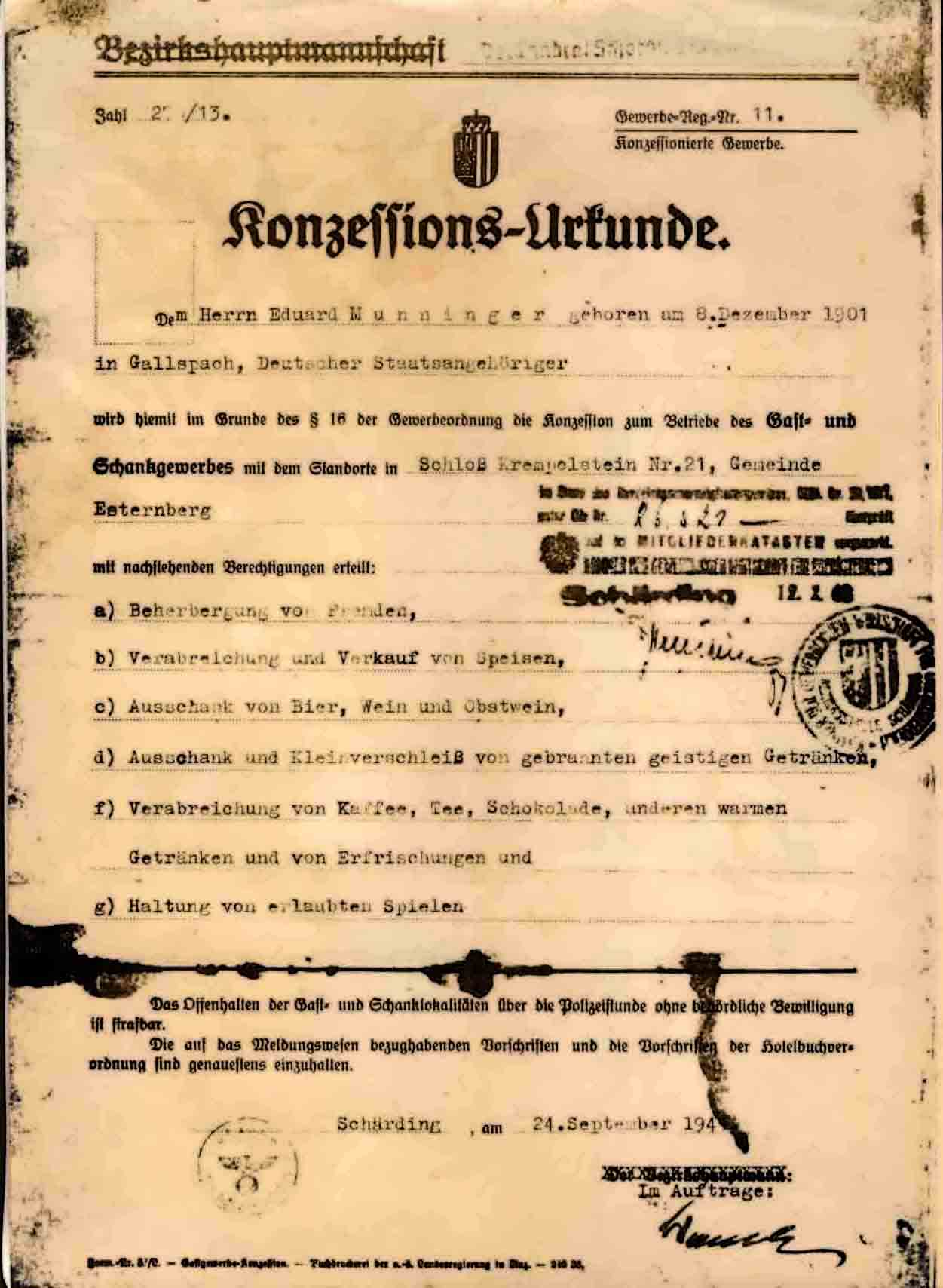
But the post-war penury that Munninger was suffering was apparently “so great”, that in an abrupt descent from the esoteric to the practical, he also enquired in this letter whether the nice Americans might have any second-hand clothes to spare. Heindel’s Rosicrucian Fellowship in California had already sent over some cast-offs, for which Munninger was effusively grateful, signing off a missive to its headquarters with an assurance that “now we, who hitherto marched out of step and believed ourselves divided, [are] all together in brotherhood thanks to your members of AMORC, Fellowship and Fraternitas.”[18] A.M.O.R.C. was now advertising in just about every possible publication in the German-speaking world and soon emerged as much the best-known Rosicrucian organisation. On the advice of Martin Erler (German Grand Master of A.M.O.R.C. from 1949-1954) Munninger’s Fraternitas Rosæ Crucis Austriæ was to amalgamate with A.M.O.R.C. in 1952. A.M.O.R.C. was still comparatively unorganised at this period; beyond completing its lengthy correspondence-course, members often knew nothing of the existence of their respective national groups.[19] It was decided that the A.A.O.R.R.A.C.’s new 1952 constitution should adopt the text of A.M.O.R.C.’s statutes word-for-word, the title ‘A.A.O.R.R.A.C.’ simply being substituted for that of ‘A.M.O.R.C.’ in the document. As a society, its objective was stated to be “the cultivation and exploration of the pansophical (theistic) world-view on a psycho-physical basis.” An “agreement for the reconstruction of the Order of the Rosy Cross (AMORC) under the name of AAORRAC in Austria” was the aim, the intention being that the A.A.O.R.R.A.C. should be joined with the A.M.O.R.C. jurisdiction in Central Europe as one legal entity, thus serving as the springboard for a yet-to-be-founded Austrian Grand Lodge for the order. Until such time, the A.A.O.R.R.A.C. would still operate as an independent body. A.M.O.R.C. Central Europe would bear the costs of A.A.O.R.R.A.C.’s official registration in Austria, pay minimal charges for setting up a bank-account, and contribute part of the running expenses (advertisements in Austria’s main astrological magazine Mensch und Schicksal, postage, instructional materials, etc.). The basis of teachings was to be A.M.O.R.C.’s own correspondence-course. In August 1952 a three-day conference was held at Burg Krämpelstein. Various delegates expressed opinions concerning the merger with A.M.O.R.C.; some of them were still campaigning for a unification of all contemporary Rosicrucian groups. A proposed application for official incorporation as a society was deferred until a future meeting, due to a lack of membership-applications. A planned “secular monastery” was also called into question, and a debate ensued over political insecurities consequent on the “peril from the east” and fears of potential danger in the scheme that the address list might fall into “unexpected hands”. It was resolved however, that they would decide for themselves how far they would adopt the teachings contained in the correspondence course. Five Krämpelstein members were to sit on the German A.M.O.R.C. Grand Council, its senior division of podestas majestatis being manned in a proportion of two to one at the Munich A.M.O.R.C. (and so in Martin Erler’s group), the podestas ordini division meeting at Krämpelstein and the podestas regimini to be controlled by mutual agreement. On November 19th 1952 Munninger informed the district council at Schärding that the A.A.O.R.R.A.C. had elected its officials at a properly constituted meeting of members held on the same day. Munninger was chairman, Emil Richter secretary and Norbert Grabherr treasurer. The organisation had decided to call itself the Society for the Cultivation and Exploration of the Pansophical World-View in the Spirit of a Pan-European Cultural Union (AAORRAC) [= Gesellschaft zur Pflege und Forschung der pansophischen Weltanschauung im Geiste eines paneuropäischen Kulturbundes (AAORRAC)]. But from now on there were to be hardly any further mentions of A.M.O.R.C. Erler recalled of his time at the Krämpelstein conference that five or six members[20] had held their rites in the nude, round a bonfire in a forest glade at night—and that certainly had nothing to do with the F.R.A.[21] Erler also remembered Munninger’s order as a “blend of chaos and whimsical knight’s costumes” while he thought of Munninger himself as mixing “humanitarian good-nature and esoteric fantasy.”[22] Munninger was completely committed to obtaining “the proofs of historical succession”, but failed to deliver their existence.[23] 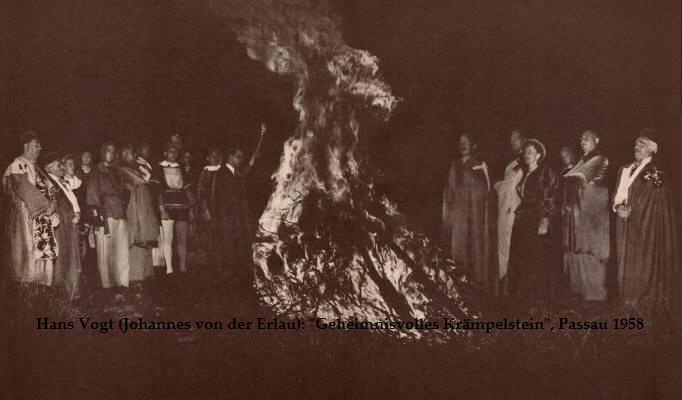
On January 26th 1953 the offices were changed: Munninger was still chairman, but he now had a new deputy in the shape of primary-school headmaster Adalbert Jungwirth, while Munninger’s wife Irmgard served as secretary and treasurer. There was now an upturn in public activities. In 1954 the periodical Mensch und Schicksal[24] included an article under the heading “Pansophical World Federation” which enthused about hundreds of students and mentioned “Provincial Legations” led by Michaelangelo von Zois, Fr. Steyrer, Albert Babor, Willy Wiedorn and Käthe K. There were no fewer than eleven order candidates living in Vienna. The Austrian Academy of Sciences mentioned Munninger on July 6th 1954 in its Yearbook of Austrian Scientists in the additions to its list of scientific institutes and societies. Munninger became a supporting member on the 9th of November that year. On January 9th 1955 there were more changes at the top of the order: Munninger remained chairman but took on the additional rôle of corresponding secretary; his wife was still treasurer and secretary; Munninger’s deputy was still Jungwirth, but Norbert Grabherr, hitherto the order’s auditor, was replaced by railway manager Stefan Gritscher. Notice of a change of registered name was sent to the security directorate for Upper Austria; from now on Munninger’s order was to be known officially as the Antiquus Arcanus Ordo Rosæ Rubeæ (et) Aureæ Crucis, or in brief AAORRAC (the Old Order of the Rosy Cross). The new statutes included big plans. After all, the A.A.O.R.R.A.C. had as its aim to become a Pan-European Cultural Union and a Pansophical World Federation (PWF). So members of the Austrian upper crust were to be sought out for involvement in the establishment of private schools, research institutes, libraries and social welfare committees. This constitution, dated March 23rd 1955, spoke of order settlements and homes, festival and cultural sites, the fostering of patriotism, the inclusion of young helpers and volunteers in the membership of a youth branch dedicated to all manner of public services, works, projects and buildings, to go under the title of the AAORRAC Public Work Service (Sozialer Werkdienst AAORRAC in German, or SoWeD-AAORRAC for short); this was to operate out of special camps called “Groves” [= Hain]. Here the youngsters would devote themselves to “short, flexibly-planned courses in handicrafts, housework and workshop labour, as well as placements in existing groups for general voluntary service in land-improvement, irrigation and drainage, public building projects, together with disaster-relief and charitable works.” Membership of the order was now open to anyone aged fourteen and over, while those who were younger could join a new children’s section. But there were some conditions: “Members are not permitted to be: professional hypnotists, professional mediums, professional clairvoyants, professional palm-readers, professional practitioners of astrology, non-believers in the existence of God, persons who deliberately avoid paid employment or who are addicted to a life of idleness.” These constitutions or order statutes were officially lodged with the security directorate at Linz on March 23rd 1955 under the registration-number Sid/Ver-68/6-1955. It was at this stage that the leader for the province of Vienna, Gita Schmidt Berghold, left the order, and although Albert Babor was entrusted with her offices, she carried on holding public meetings under the A.A.O.R.R.A.C. name. She began legal proceedings against Munninger—though why is not apparent from preceding events—and Munninger in turn brought a case against her on April 16th 1955 for misuse of the titles AAORRAC and ORC Rosicrucian Society [= ORC Gesellschaft Rosenkreuz]. The outcome of these disputes is not known. In common with Metzger’s O.T.O., where the leadership of various organisations was combined under one head, Munninger now collected a number of bodies together into the A.A.O.R.R.A.C. under the umbrella of his Pansophical World Federation—specifically the Areopag Europäischer Kulturring der Ritterorden (Areopagus of the European Circle of Knightly Orders), a Souveräner Orden der Tempelritter von Jerusalem (Sovereign Order of Knights Templar of Jerusalem), and the Ordre Maçonnique Martiniste Austria (Masonic Martinist Order Austria)—each saw the A.A.O.R.R.A.C. as its abode and underpinning.[25] Much later on (July 20th 1988) a Linz newspaper, the Oberösterreichische Nachrichten, recalled that Munninger had also become a priest of the Liberal Catholic Church. It is not known whether Munninger had actually laid claim to the F.R.A. as well. He considered Krumm-Heller’s F.R.A. to be a kind of offshoot from Max Heindel’s Rosicrucians, because—or so he claimed—the latter had split into rival branches after Heindel’s death. Heindel’s German Rosicrucian Fellowship (Rosenkreuzer-Gesellschaft) in Darmstadt vehemently contradicted Munninger’s assertion, which had appeared in Mensch und Kosmos magazine. Georg Vollmer, president of this group,[26] put the record straight on May 18th 1955: under no circumstances had the Fellowship split, unless it had been divided into sections for straightforward managerial and technical reasons. Vollmer was quite taken aback over Munninger’s claims to have “taken into our observance a year ago the sixty-four extant Max Heindel Fellowships worldwide” and that he was “authorised to disseminate Max Heindel’s intellectual legacy.” Vollmer retorted: “Since we have hitherto not been informed by our headquarters in Oceanside, and cannot ourselves conceive as to where these sixty-four Fellowships might be, we would ask you to furnish more specific details of whence you derived your ‘information’ or your supervision of the Fellowship.”[27] Munninger answered by return of post; after asserting that he had belonged to the Rosicrucian Fellowship since 1926, he continued: “There is not a single historical idea of Rosicrucianism contained within Max Heindel’s instructional volumes, and that is I n t e n t i o n a l. In the first place this involves the creation of a world-view deriving from the concepts of Blavatskian theology. This was undoubtedly the reason why AMORC as well as the Fraternitas Rosæ Crucis were led into feuding (and sadly for so long) […] We have not involved ourselves in these ideological squabbles. […] Yes, we have indeed used large parts of the Heindel version [of the teaching-materials] for instructional purposes, as well as part of the spiritual preparations for Neophytes. I was in touch with Oceanside by 1947, and in all the years since then I have received a large quantity of writings, books, many ritual robes and other items from their representative there, Br. Elvin Noel. […] Our relations with the Fellowship as an RC-society have always been very warm. Nonetheless (and w i t h o u t value-judgements!) we also placed Heindel’s ideas within our historical synopsis, so that it fell into place a l o n g s i d e the Fraternitas teachings (Krumm-Heller) and certain other modern ideologies. […] The AAORRAC Collegium ad spiritum is now being conducted as that kind of universal forum wherein all genuine and dedicated persons may meet. […] The sixty-four study-groups we run are all descended from former Fellowship study-groups. A list of these was forwarded here from England in 1950 and was entrusted to us because there was apparently no viable central leadership at the time.” Munninger closed by inviting the Rosicrucian Fellowship “to the Collegium ad Spiritum Sanctum in the Arch-Chapter of the AAORRAC.”[28] Obviously nothing came of the wishes expressed in this letter, as seven years later he was asking Vollmer about sending him some copies of Heindel’s writings.[29] The muddling of obediences, order-titles, and uncertain legitimations among these Rosicrucians continued apace. For internal A.A.O.R.R.A.C. consumption, preferential attention was given to the “region-unifying name PANSOPHIA”, Franz Hartmann, Friedrich Lienhard, Walter Heilmann, Anna Sprengel, Max Heindel and Krumm-Heller.[30] Meanwhile the order’s journal was named "Die Burg". |


The Wine-Bar, Hans VogtThomas Munninger: “Incidentally, in the fifties the mother of Peter Weibel (the well-known media theorist) worked at the Burg as a barmaid.”[31] Visitors to the wine-bar were presented with postcard-sized certificates: “Herewith it is solemnly attested that on this day his honour Herr …… has, to the best of his recollection and of his own free will, and for the more certain continuation of celebrations, drunk … glasses of the fruit of the vine. Certified by this impressed seal and signature. Burg Krämpelstein, this … day of …, 19… Witness: …… Castle Steward and Cellarmaster [Munninger’s signature].” On January 25th 1957 Munninger informed the regional authorities of his new officers: deputy chairman, Adalbert Jungwirth; treasurer, Irmgard Munninger; custodian and chancellor, Johannes Vogt; deputy custodian, the police official Friedrich Konrath; auditors, Stefan Gritscher and Victor Steyrer, both “clerks.” “Hans Vogt had held an office within the Order (as ‘Chancellor Johannes von der Erlau’),[32] which might well have been an honorary title; when they were cooking something up together my grandfather and he were—in my opinion—wasting their time on Faustian fictions.”[33] Hans Vogt (1890-1979) became Grand Chancellor of the order on 26.11.1953, and was made “Burg-Chancellor” on 21.12.1953.[34] He is regarded as an originator of the modern sound-film system.[35] He also wrote On Spiders, On Angels, On the Master, The Erlau Zodiac, Farewell to a Mother, on Erlau Life and about The Invention of the Sound Film, etc., etc. In the Erlauer Geschichten (‘Erlau Stories’) for (?)1968 he spoke of spending Christmas 1944 in a chapel at Pyerawang with the Krämpelsteiners, who had managed to bring a harmonica along to the celebrations. In 1958, under his alias Johannes von der Erlau, he self-published a lavishly-illustrated study of Mysterious Krämpelstein. In this he described Munninger as “tall, stout and stocky, pleasure-loving, very definitely not a Franciscan ascetic, he seemed to enjoy anything that was unusual, outlandish or mysterious. He was indisputably highly educated, loved and could speak ancient tongues. Understandably, he was not exactly equal to the practical requirements of a normal life. He was an inveterate night-owl, and just like an owl slept away half the day in his turret chamber. Writing, entertaining, meditating, painting, thinking and teaching—avid souls from near and far sat at his feet—thus he lived his life as ‘Medardus’. Yet constant battles with dull bureaucrats and overweening authorities was the general rule; his constant worry was that the Burg’s iron coffers were never full enough. […] And what a piece of good luck for him: a charming lady, a newcomer to our particular sphere, married this man who was so easily distracted by the worlds of the intellect and spirit.”[36] 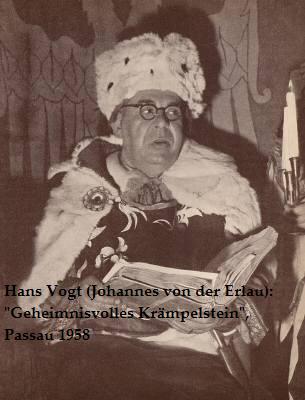
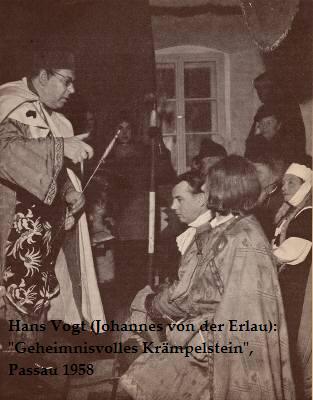
There were still changes going on at the top: on January 6th 1960 the post of deputy custodian was taken over by headmaster A.E. Lattinger. On January 25th 1962 the leadership read as follows: Chairman, Eduard Munninger; Deputy Chairman, Adalbert Jungwirth; Treasurer, Rudolf Gastinger; Secretary, Emil Helm. On January 8th 1963, the authorities were notified of the group’s officers: Chairman and Custodian, Eduard Munninger; Treasurer and Deacon, Rudolf Gastinger; Secretary and Chancellor, Emil Helm; Accountant, Franz Bachmayr; Custodian and Accountant, Florian Schöfl. Despite all these changes, Munninger’s guest-house in the Burg, his “Mater Ariopa”, was never granted any lasting success. 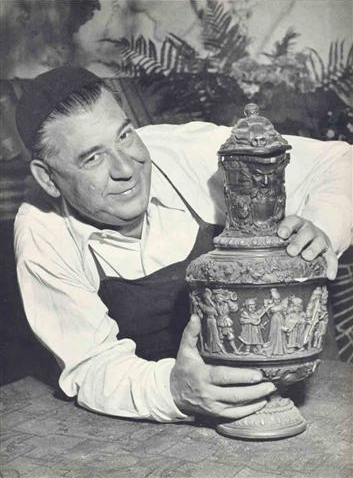
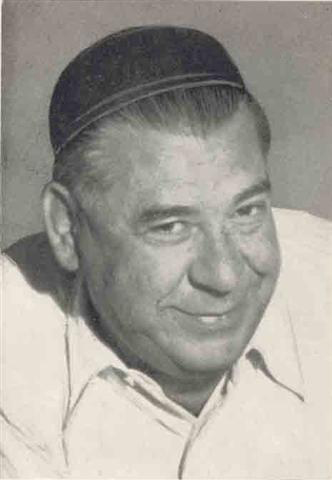
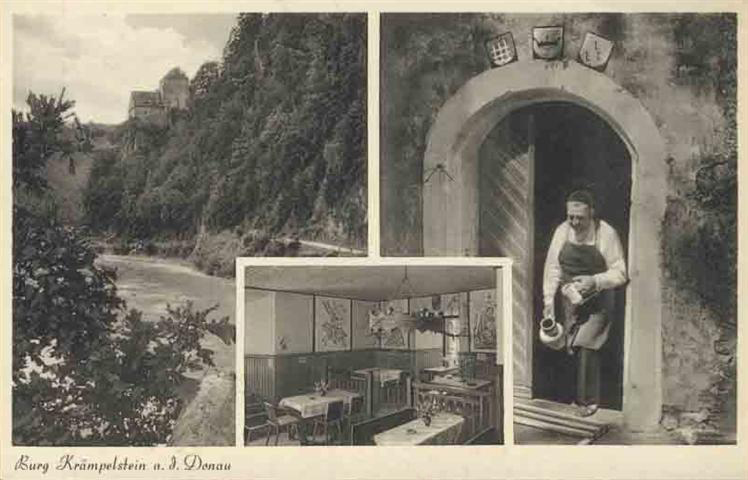
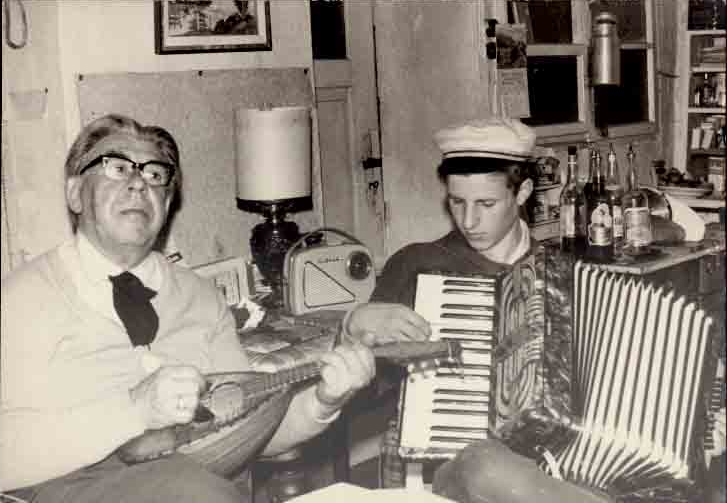 Eduard and Thomas Munninger - Eduard Munninger Archive (EMA) Axel Springer: 1961Thomas Munninger: 8. “From 1961 to 1964 my father was involved in a legal action against the BILD newspaper,[37] and against its publishers, the Axel-Springer-Verlag. The result back then was to cause a considerable sensation. Baseless accusations had been made against my father, while the lower ranks produced sensationalised tabloid attacks on him, with the result that the then still-published (Austrian) KRONENZEITUNG stood shoulder-to shoulder with the rest of the supposedly ‘worthy’ Austrian media against my father, and found a congenial partner in BILD. In the spring of 1964 BILD was FINED after a MAMMOTH TRIAL (total court-time per day: almost twelve hours!). My father's lawyer lodged an appeal to have the fine increased, the appeal being set for early 1965. Now my mother too was to be examined as chief witness, which finally had brought the whole ‘wearisome trial’ to a definite end.” Gustav Pscholka, president of the Austrian Society for Psychical Research [= Oesterreichische Gesellschaft für Psychische Forschung] and a Member of the Emergency Committee of the Scientific Union [= Mitglied des Notringes der Wissenschaftlichen Verbände], congratulated Munninger for his victory over the tabloid press, while Hans Bender[38] of the Institute for Borderland Psychology and Psychohygiene Ltd. [= Institut für Grenzgebiete der Psychologie und Psychohygiene e.V.], even brought his own case against a television programme produced by Springer’s company, to defend the rights of those making efforts in spiritually oriented research.[39] Metzger had now set up his own guest-house in Switzerland, the Gasthof Rose, and paraded round its garden in his Templar robes. If one compares Metzger’s set-up with Munninger’s group, their mise en scène seems almost interchangeable. Metzger presided as a Knight Templar over his Gasthof, where the crockery was decorated with a rosy cross, while the Rosicrucian Munninger ran his castle as a knightly steward and cellarmaster. Karl Germer, who had led Crowley’s Ordo Templi Orientis in the USA, died in October 1962; Metzger became self-styled worldwide leader of the O.T.O. in January 1963. In the same breath he called himself “rightful Hierophant of the Fraternitas Rosicruciana Antiqua for the Latin lands,” and then proceeded to tar both the A.A.O.R.R.A.C. and the Lectorium Rosicrucianum with the same brush as “false orders” in issue 302 of his Oriflamme for April 1963. One thorn in Metzger’s side may well have been that both these organisations had been busily recruiting and could point to gratifyingly high membership-numbers.[40] Metzger sent out circular letters against Eugen Grosche, Pansophia, and Walter Studinski as well. The idea of “Pansophic-Gnostic Rites” had found a home with Studinski (Heinrich Traenker’s former student and long-term friend)[41] soon after Tränker’s death in 1956. Now such rites were also being celebrated by Munninger at his Burg.[42] In 1964 Munninger was still trying to turn the A.A.O.R.R.A.C. into a platform for the Spiritual Culture Union he had first mooted in 1948. To this end he made contact with Countess Zoë Wassilko-Serecki, general secretary of the Austrian Society for Parapsychology (Psychical Research).[43] The “scattered remnants of the AAORRAC on an unsustainable scale”[44] duly fell into abeyance after Munninger’s death in 1965.[45] He was survived by his wife, his son and the two daughters of his first marriage. Thomas Munninger: 10. At that time I was studying law at Vienna University. In 1968 I continued the (AAORRAC) order […] Afterwards—having begun as a primary-school teacher—I became politically and culturally active in our local region, e.g. founding a fully independent municipal party in Esternberg (the IFVA—Independent Free Voter’s Association) which got 8% of votes at the first attempt—and later running a cultural group (Kunst und Kultur auf Krämpelstein) from 1972-81.”[46] Any further business?Two years after Munninger died, Albert Babor (“Albus”), former “Provincial Legate for Vienna” was thinking of continuing the A.A.O.R.R.A.C. and asked “the publishers of ‘Die Burg’ magazine” if he could take over “the AAORRAC Eastern Austria Province”.[47] Irmgard Munninger provided the answer: “Order work on your part is out of the question at the moment, since the Order no longer exists in its original form.”[48] But Babor wouldn’t give up: “Isn't your son carrying on with the Order (as a Rosicrucian Order)? […] is the Order finished and no longer registered?” He followed with a twelve-point list of items he was hoping to purchase from Frau Munninger, including ritual robes, order sashes, gloves, altar-utensils, pentagrams, books, manuscripts, addresses…[49] Later Thomas Munninger commented: “It is true that I have been installed as Medardus’s successor. The Order now exists only as a way for the members to keep in touch with each other by letter (or tape) for discussions […] but it is still thought that the AAORRAC could be revived in its old form at some future date.” Babor’s request to buy up Order paraphernalia was refused.[50] He did not get in touch again until 1984. In 1970 Munninger’s Pansophic-Gnostic Rites were printed in the Fraternitas Saturni’s publications.[51] Later Friedrich-W. Haack reproduced them in the A.R.W. series.[52] In 1981 Burg Krämpelstein was rented by the Kopfing Motorcycle Club, led by police-captain August Weidenholzer and a retired bishop called Zauner. Fifteen families (?!) apparently managed to live happily together in the tiny castle; they held parties and private archery-contests. But on the night of October 20th 1984, the Burg was burnt down almost to its foundations, allegedly as the result of a structural fault.[53] “The building’s tower was completely burnt out, while only a part of the residential quarters—the ‘Palas’—was left untouched. A ‘building-blocks’ campaign was set up—with the help of the Upper Austrian state [and the historical monuments office]—and allowed a restoration to be started, or at least a partial reconstruction.”[54] The Burg was still the property of the Prince of Vichtenstein’s son,[55] but it was left empty. As before, no electricity was laid on at the Burg, which soon became an “uninhabitable ruin” once more, as Oscar Schlag was able to confirm when he had visited the site. But by 1988 the renovations were completed, and the eighty-odd members of the Kopfing Motorcycle Club could hold their parties there once again. Albert Babor, Karl Plank: 1984Thomas Munninger: In May Karl Plank ("Augustinus") who lived in Klosterneuberg near Vienna, received Irmgard Munninger’s address from Albert Babor in Vienna. He told her he had a group of eight interested recruits.[57] Babor also wrote to Frau Munninger: “We’d really like to work an AAORRAC group officially, because the Order counts as the one true R.C. order for us. We know all about certain other associations, like AMORC, Lectorium Rosicrucianum, Wegener’s society, Rosicruciana Antiqua, etc., but these aren’t relevant. There are some possibilities in Heindel’s Rosicrucian Fellowship, but they’re an intolerant lot—” There followed a request for addresses and this parting shot: “Our leader or Führer is Brother Karl Plank, not Heger [?].”[58] Frau Munninger told Plank about her hopes that “there may be some chance of a satisfactory collaboration. My son Thomas would be mainly responsible for matters, though he is very busy with his work as a teacher.”[59] [It is apparent that a portion of the correspondence is missing at this point.] In July 1984 Babor wrote to Frau Munninger: “We were overjoyed to hear that you and your son Thomas are pleased to be involved and enthusiastic about the revival of our beloved AAORRAC Order.” A deadline was set to meet in Esternberg before the end of the month,[60] and three weeks later Plank still believed “that everything will soon change for the better.”[61] In fact it took them until October 1984 to meet in Vienna, and Frau Munninger did not attend. A letter from Plank dated October 20th is full of talk about photocopying, booklet-designs, and “advertising-psychology factors.”[62] Plank was a member of the A.M.O.R.C. city group in Vienna.[63] After Babor’s death in 1984 (?) he took over the leadership of the newly-minted A.A.O.R.R.A.C., and initially obtained some material help from Thomas Munninger, who however soon distanced himself from Plank. Martin Erler of the ORA also refused any support.[64] According to some A.M.O.R.C. members, Plank fell under suspicion of an unhealthy interest in the Order’s funds. Further, “Herr Plank got hold of ritual items belonging to the Vienna city-group and parts of the AMORC correspondence-course to which he was not entitled. These events are legally documented in Vienna.”[65] It has been alleged that Plank had links with Walter Englert’s IO/O.T.O. in Frankfurt, and was not widely viewed as Munninger’s real successor. 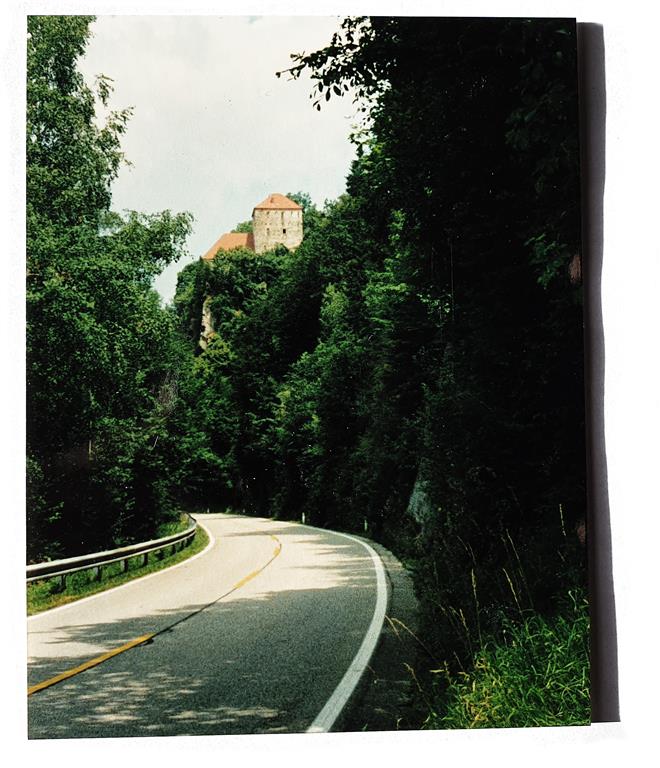
Still, Plank’s group now started advertising (with addresses in Vienna and Klosterneuberg) in various esoteric magazines:[66] “The immortal Order of the Rosy Cross” the ads enthused, “reveals Mysticism and Pansophy”[67] and invited “Neophytes from all esoteric fields” to see for themselves the “wonders told of the Adepts of the original Rosicrucian Order at Burg Krämplestein.”[68] 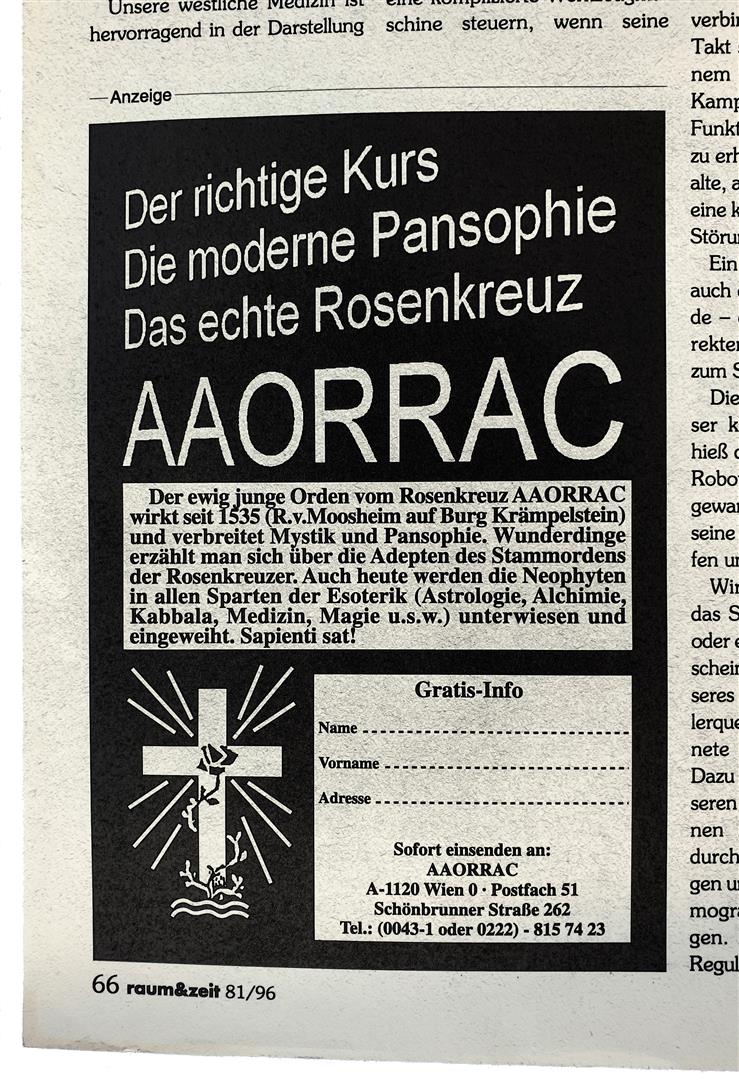
Those seekers who replied to the adverts were first directed to read Heinrich Tränker’s book "Mystischer Glockenschlag"[69] (‘The Mystical Chime’) and then Rudolf Passian’s "Licht und Schatten" (‘Light and Shadows’, Munich 1991). This latter comes as no surprise, since it is the only book to have ever seriously maintained that the A.A.O.R.R.A.C. had “credible historical foundations.” Passian had already managed to convince himself that the Beatle Paul McCartney was influenced by the devil, because he had once worn a red academic gown and black gloves while being invested with an honorary doctorate. Passian also vigorously promoted a Fama Fraternitatis-type tale that the genuine writings of the notorious Anna Sprengel, original initiate of the Golden Dawn, were still preserved at Burg Krämpelstein in the possession of the A.A.O.R.R.A.C..[70] The Burg’s present owner knows nothing of this.[71] After so many re-foundings based on such dubious historical traditions, the latest A.A.O.R.R.A.C.’s Führer hoped that the interests of his aspirants “would tend not so much towards external forms as interior working,”[72] and referred to his order as “all-embracing Nuit.”[73] Just as in Metzger’s circles, in the Caliphate and most of the other secret societies mentioned here, they were opposed to critical and historical studies, and even referred to the “despicable moral conduct” of authors… Plank died in late 1999 at Klosterneuberg; despite this, advertising for the A.A.O.R.R.A.C. continued to appear in the occult press, now with an address in Vienna. But any attempts to email their website (which went online in 2001) at http://www.silverchord.net/aaorrac/ resulted in the reply “Recipient address rejected: User unknown in virtual alias table”.[74] ENDNOTES[2] Andreas Munninger, Eduard Munninger’s grandson, has kindly made a large number of documents available for the present study. “For some time I have been a freelance archivist and collector of (parts of) literary estates (among others those of the Stauffenberg family, Hilde Krahl/Wolfgang Liebeneiner, Käthe Gold, Hans Jaray, Erwin Chargaff, Erst Fischer, etc.) Where my grandfather is concerned, my interest is mostly historical, in his contributions to research on the personality of Ruprecht von Mossheim, and also his friendships with Hans Vogt and August Kubizek.” Andreas Munninger, email of 14.8.2007. His extensive private archive is about to be professionally catalogued. Material used for this article comes from his Eduard Munninger Archive and is labelled EMA. [3] Allegedly used by Ruprecht von Mossheim (1493-1554) as the setting for a failed Rosicrucian group; this according to Munninger in his recruitment pamphlet "AAORRAC Die Entwicklung des Rosenkreuzertums" (‘AAORRAC: the Development of Rosicrucianism’). This small castle, first mentioned as a dwelling in 1170, stands on a rocky cliff high above the Danube some 15 km from its source, and was originally built as a tollhouse by the local bishop. In popular legend it is called Schneiderschlössl (or Tailor’s Fort) after a tailor who tried to throw his recalcitrant goat from the castle into the Danube, but was himself butted into the depths. It has been used as a summer residence by the bishops of Passau, and even as a prison. On some local maps its name is given as Krempelstein. [4] “The Schulz-Wulkow family, owners of the castle at this time (from 1938) were never involved in Order matters. Their surviving correspondence (partly from the Nazi era) deals almost wholly with commercial concerns; to this day, the family’s main interest lies in a forestry business. Local opinion of my grandfather today matches its former disparaging character (‘hocus-pocus’, etc.).” Andreas Munninger, email of 20.8.2007. [5] Reuben Swinburne Clymer: "The Rosicrucian Fraternity in America", vol. II, (Quakertown 1937), pp. 601, 747 and 752. [8] It is still not evident at what point Munninger put his signature to the aforementioned document, since Clymer’s "Fama Fraternitatis" appeared in several versions. The 1943 edition is based on the 1939 version; but Munninger’s signature and seal appear in neither. [12] Pansophical World Federation P.W.F. Former A.M.O.R.C. Grand Master Martin Erler thought that the P.W.F. must have served as an parent-organisation for the O.T.O.; telephone conversation of 19.6.1991. It seems Mr. Erler believed the title O.T.O. usually represented an umbrella-group for various orders—exactly as Theodor Reuss first planned it to be. [13] As Clymer’s "Second Fama" appears under sundry dates and Munninger’s name is not present on the first version dating from 1939, it is unclear exactly when he did sign it, Krumm-Heller’s proposal possibly already having been put into action. Nevertheless, there is a copy of a "Second Fama" with Munninger's signature and seal extant. [16] A lady called Florence La Fontaine Randall who hailed from Indiana was particularly charmed and even suggested forming a subsidiary group. Letter to Munninger of 31.5.1953. EMA. [18] Munninger to Elvin Noel, “c/o Mt. Ecclesia RC Fellowship, Oceanside, CA”, letter of 9.12.1952. EMA. [20] Munninger had been expecting thirteen order Brethren to attend as pupils: Monographie, 2nd Neophyte Grade, Number 3, p. 16. [23] Erler parted company with A.M.O.R.C. in 1956 and founded the Ordo Rosæ Aureæ, ORA for short. Erler fell into his later antipathy when Louis Emrich, the publisher of the journals "Neues Europa / Morgen" and "Weltkonjunktur" informed Munninger that he would not be mentioning the latter’s pamphlet in his newspapers (the pamphlet had appeared in an edition of just 50 copies “at Munich”). Emrich to Munninger, letter of 9.10.1955. EMA. [24] Which also printed a Manifesto of the “Pansophical World Federation” on page 11 of its issue dated “VIII/14 1954”. [32] Vogt was also given the title Hereditary Arch-Chancellor (“Erb- und Erzkanzler”); this in Munninger’s invitation to a meeting of a “Sun Chapter” sent to Otto Stöber, manager of a mud-bath establishment at Niedharting, letter of 9.6.1958. EMA. [34] Details given in Johannes von der Erlau (i.e. Vogt): Geheimnisvolles Krämpelstein [‘Mysterious Krämpelstein’]. Erlau, 1958, pp. 15, 16. [37] Extracts from Vogt’s book Mysterious Krämpelstein formed part of the BILD articles which provoked the trial. [40] Later, Lectorium Rosicrucianum posters appeared regularly on public transport. A.M.O.R.C. negotiated bulk-discount publicity deals with big pulp-magazine and paperback publishers, and even advertised in PLAYBOY during the 1970s. [41] “Today I am the last Pansophist left from any of the viable R+C Orders illuminated by Heinrich Tränker.” Walter Studinski to Friedrich-Wilhelm Haack, letter of 2.9. 1981. [42] "Pansophisch-Gnostische Riten I. Opus magnum" a) in "Sonderdruck 1 der Vereinigten Grossloge VGL Fraternitas Saturni" 1970. b) in Adolf Hemberger: "Documenta et. Ritualia Fraternitatis Saturni" volume X, Giessen circa 1971. c) in F.W. Lehmberg (ed.): "Magische Sonderdrucke und Interna der FS", München 1980. (2) "Pansophisch-Gnostische Riten III. Opus hermeticum". a) in F.W. Lehmberg (ed.): "A.A.O.R.R.A.C. Pansophisch-Gnostische Riten III. Opus hermeticum", München 1985(3). Here's a list of Hemberger's works: alias Klingsor: "Experimental–Magie, Freiburg im Breisgau 1967; "Organisationsformen, Rituale, Lehren und magische Thematik der freimaurerischen und freimaurerartigen Bünde im Deutschen Sprachraum Mitteleuropas – Der mystisch–magische Orden Fraternitas Saturni", Frankfurt 1971; "Philosophie der Grünen Schlange", two volumes, Giessen 1973; "Pansophie und Rosenkreuz", three volumes, Giessen 1974; "Documentia et Ritualia Fraternitatis Saturni", 15 parts in 17 volumes, 1971 and onwards, Giessen; "Magia Magica", without date or place; "Erziehungsziele – Wesen, Geist und Genesis – Kösener Corps – unter besonderer Berücksichtigung der Kreise, Kartelle, Freundschafts– und Vorstellungsverhältnisse", Giessen 1976–77; "Die adonistischen Lehrbriefe der Ateschga–Taganosyn nach Rah–Omir–Quintscher", Giessen 1980; "Interrelationen und Verknüpfungen physiologisch–psychologischer Prozesse als Wechselspiel von Soma und Psyche bei Pferden", Giessen 1985; "U–I–E–A–O", without date or place. [45] Curiously, Munninger was not buried in either Esternberg (i.e. Krämpelstein) or the neighbouring parish, Vichtenstein. [47] Babor to “the Burg press”, letter of 15.3.1966. He signed himself as “Babor Albert B[.]ALBUS O.R.C.”. EMA. [51] "Opus Magnum", in "Sonderdruck 1 der Vereinigten Grossloge VGL Fraternitas Saturni" (‘Special Edition 1 of the Fraternitas Saturni United Grand Lodge’), 1970. Shortly thereafter the same texts appeared in Adolf Hemberger’s "Documenta et. Ritualia Fraternitatis Saturni" Volume X, Giessen, after 1971; and again in Lehmberg, op.cit. [53] G. Schulz-Wulkow (Schloss Vichtenstein), letter of 25.7.1994. The fire was started by a two-hundred-year-old building-fault, a wrongly-inserted floor-beam that was too close to a chimney. Because fire-fighting proved so difficult—there was no mains electricity or water, any water having to be heaved up the cliffs from the Danube in three relays—too much time was wasted; the Burg’s interior was almost completely gutted, and only the outer walls were left standing. [60] Babor to Irmgard Munninger, letter of 23.6.1984. EMA. According to Martin Erler over the phone, Plank applied to join his ORA, telephone conversation on 19.6.1991. [63] A.M.O.R.C. maintained about fifty city-groups in German-speaking territories, where members were able to meet face-to-face. [66] The A.A.O.R.R.A.C. and A.M.O.R.C. are the only orders within the O.T.O. phenomenon that have regularly recruited by advertising in the occult press. A.M.O.R.C. (incorporated under the law as an association in Germany) has extolled “the hidden Truths of Life” for decades with its publicity in pulp magazines and books, keeping up-to-date with phone and fax numbers and pre-recorded information-lines. A.M.O.R.C.’s stand is a regular feature at the Frankfurt Book Fair. [73] "Das Rätsel des Lebens und seine Lösung" (‘The Riddle of Life and its Answer’), Klosterneuberg, n.d. In Crowley’s cult of Thelema the Egyptian goddess Nuit refers to the vagina in sex-magical terms, and to the Pleroma in Gnostic terms. The text of this small pamphlet—decorated with comic-strip figures—quotes almost verbatim (and without acknowledgement) from Annemarie Äschbach’s "Oriflamme Seminar Lecture" No. 10 ‘The Pedagogical System of the Illuminati Order’ [Das pädagogische System des Illuminaten Ordens], Zurich 1975, p. 20. [74] The last attempt by the present writer was made on 29.6.2010. © Peter-R. Koenig, 2011. This is a shortened and translated outline of a sub-chapter of Der O.T.O.-Phänomen RELOAD. My thanks for translation skills go to Mark Parry-Maddocks. Also, visit the occult gallery context. |
|
O.T.O. Phenomenon navigation page | main page | Aura of the O.T.O. Phenomenon | mail
What's New on the O.T.O. Phenomenon site?